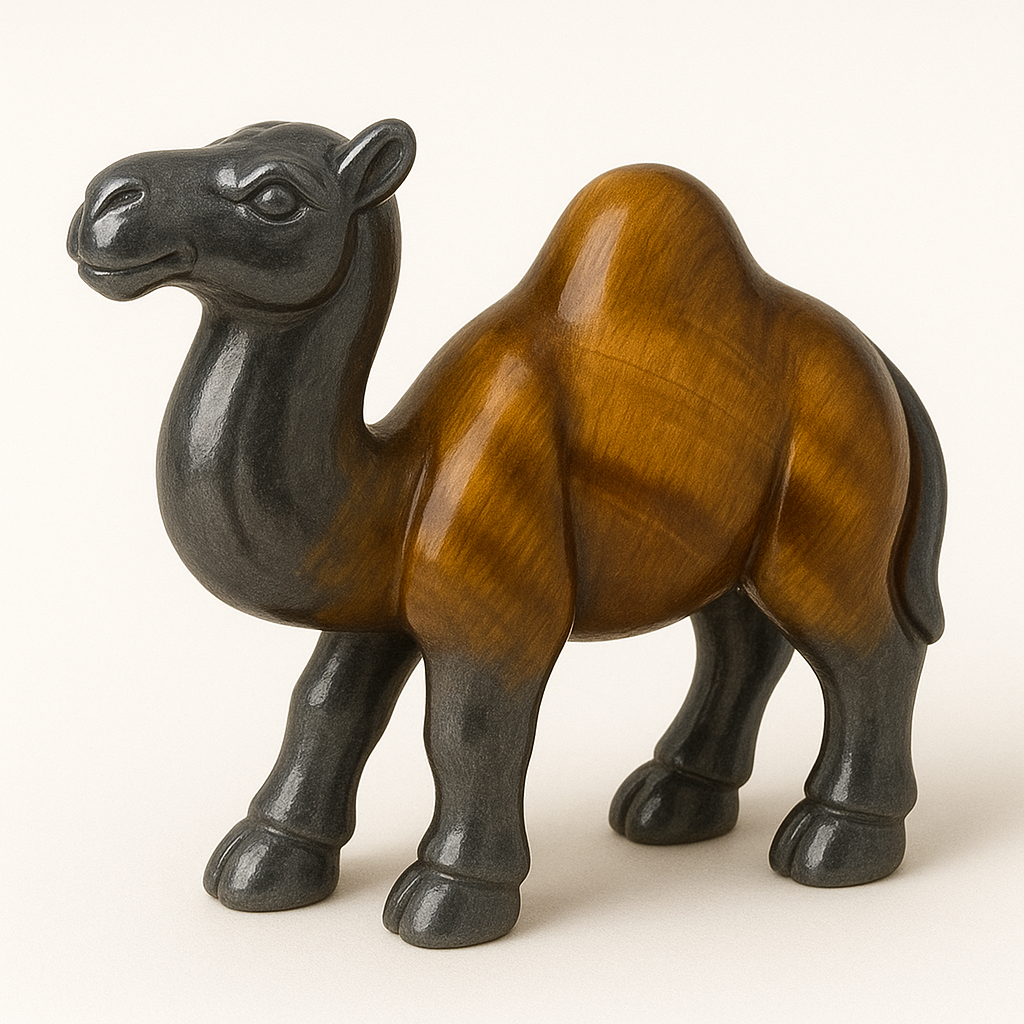
The Symbolism of Camels
Share
Carrying burdens across vast, arid expanses with quiet strength and patient endurance, the camel walks not in haste but in certainty—trusting not the fertility of the landscape, but the abundance carried within. It is a creature of resilience, self-reliance, and sacred endurance. The camel does not require comfort, yet it moves forward. It does not resist harshness, yet it remains whole. It is the archetype of the spiritual traveler, who survives not by conquest, but by preservation of energy and inner provision.
To contemplate the camel is to understand the power of steady movement through spiritual dryness, and to honor the capacity to sustain the journey inward without needing constant external replenishment.
The Desert Walker in Cultural Memory
In many desert-dwelling civilizations, the camel is not merely transport—it is life made mobile, wisdom made flesh, and a companion in exile and return. Among the Bedouins, Tuareg, and other nomadic peoples, the camel is revered as a being of stability, wealth, memory, and sacred trust.
In Islamic tradition, the camel holds symbolic space as a sign of divine design—perfectly adapted for survival in the harshest of terrains. The Qur'an invites reflection on the camel as a proof of the Creator’s harmony in form and function, a being that endures not through force, but through balance.
In esoteric thought, the camel is sometimes linked to the Hebrew letter Gimel, whose pictographic form originally depicted a camel and whose meaning includes movement between poles, generosity, and spiritual journeying.
Wherever it appears, the camel is not a creature of impulse—it is the one who knows how to wait, walk, and withstand. Its knowledge is not spoken—it is carried.
Storage, Silence, and Direction
The camel can go long distances without external water because it has prepared inwardly. It carries its resources within—not only fat in the humps, but the lesson of energetic conservation. It does not react to every thirst. It paces itself by deep memory.
Its feet are soft, designed not for speed but for sacred contact with the shifting sands. It walks without drama, even under immense weight. Its call is deep and guttural, rarely made. It teaches that expression is not always required for truth, and that silence is not emptiness, but spiritual preparation.
In its still eyes and forward gaze, the camel reflects the state of internal knowing: the knowledge that the journey is long, but already survived.
Resonance with the Energy Centers
The camel resonates primarily with the red-ray energy center—the root chakra, which governs physical survival, endurance, and connection to the body’s fundamental wisdom.
This resonance is clear. The camel does not theorize survival—it embodies it. Its relationship with space, time, and necessity is undistorted. It teaches the seeker that to survive is not merely to endure hardship, but to prepare wisely, move patiently, and trust the self’s connection with the Earth.
There is also a secondary resonance with the yellow-ray energy center—the solar plexus chakra, which governs will, identity within the collective, and right action within structure.
The camel functions not alone, but often in caravans—groups bound by shared rhythm and mutual purpose. It is a servant without slavery—a being who offers its strength to the group without losing its center. It reflects harmonized will within the field of others.
Together, red and yellow form the energetic current of the camel:
the instinct to survive joined with the will to serve,
the body’s wisdom joined with the journey’s purpose.
The Keeper of the Long Path
To walk with the camel is to learn that progress does not require comfort, and that movement can be sacred even when slow. The camel teaches that spiritual dryness is not a failure, but a phase of the path, and that endurance is not passive—it is conscious, prepared, and chosen.
It shows that the most difficult leg of the journey is often the one closest to awakening—and that those who survive the desert often carry the clearest water within.
The camel does not run toward the oasis.
It walks—because it already carries what it needs.
It teaches:
The sacred is not always lush.
Sometimes, it is dry, and endless, and silent—and still holy.